Before reading this article, check out my article for TVO about the 1943 Ontario provincial election.
 |
| Globe and Mail, July 19, 1943. |
I'm beginning to think that editorial cartoons showing a paper's preferred candidate sowing a field was an easy sketch for cartoonists to do in the midst of a campaign.
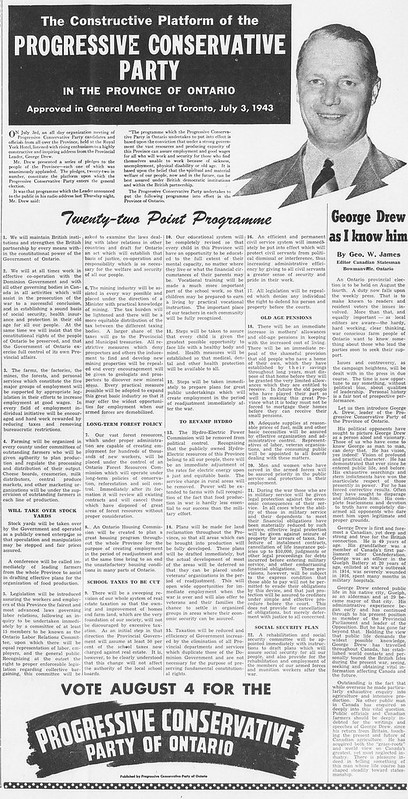 |
| Canadian Statesman, July 15, 1943. Click on image for larger version. |
A campaign ad with the Progressive Conservatives' full Twenty-Two Point Programme.
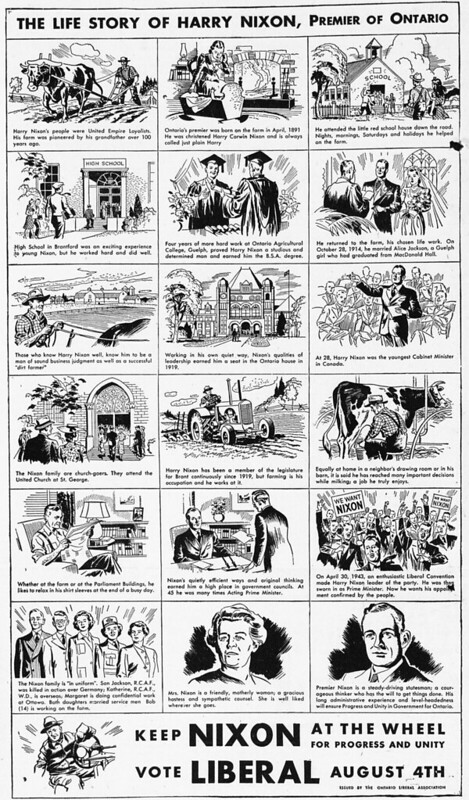 |
| Canadian Statesman, July 29, 1943. Click on image for larger version. |
The Liberals took a graphic approach to highlighting the accomplishments of Harry Nixon.
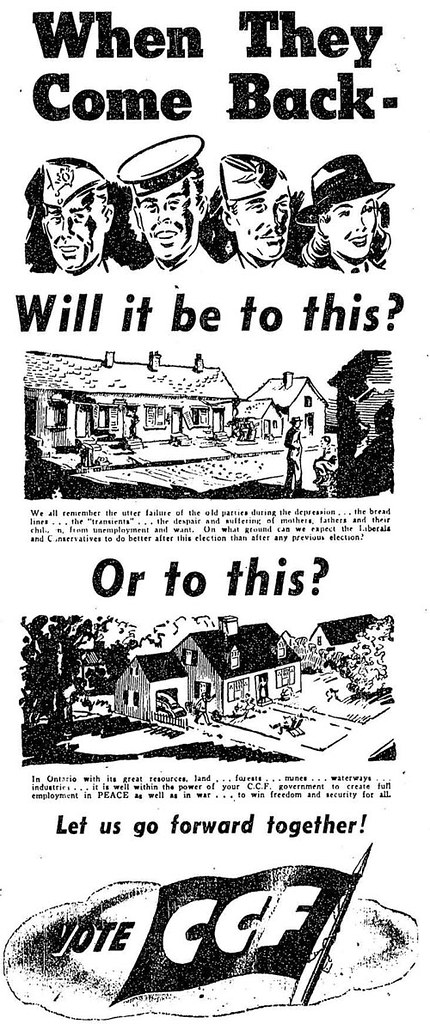 |
| Globe and Mail, August 2, 1943. |
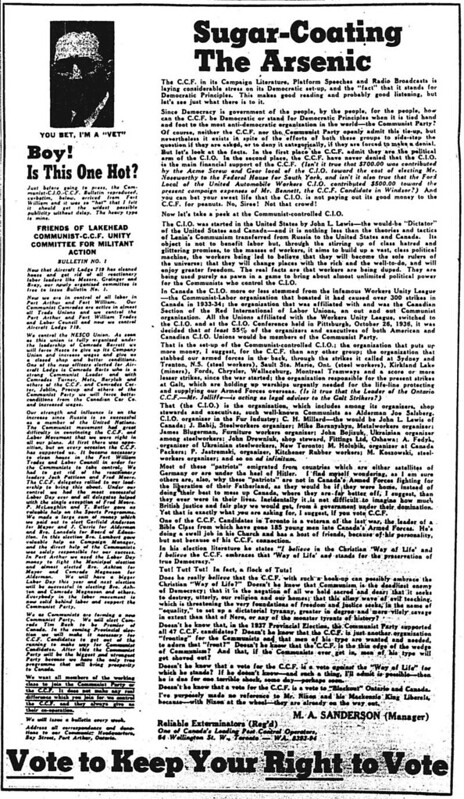 |
| Globe and Mail, July 29, 1943. Click on image for larger version. |
Political propagandist Montague Sanderson felt there were more pests to exterminate than the insect kind. During the 1943 campaign, he bought four ads in the Globe and Mail which touted his credentials as a First World War vet and desire to destroy the CCF. Sanderson's lawyer once described his motives as “partly patriotic, partly for the glory and publicity, and partly the advertising obtained for his business.” He believed the party was paving the way for a “Communists-CIO-CCF dictatorship” which “would exterminate democratic government by violence.”
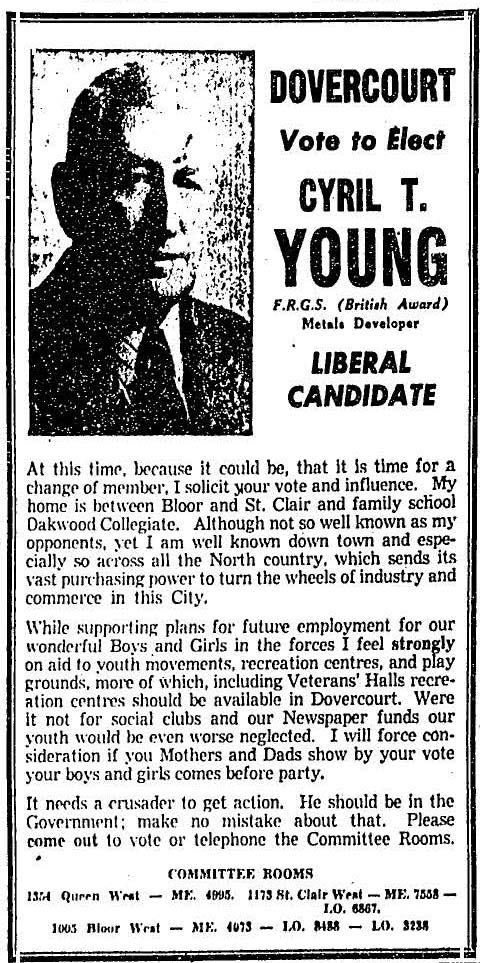 |
| Globe and Mail, August 2, 1943. |
An important lesson to political candidates: hire a proofreader to make sense of your platform. This ad didn't work for Cyril Young, who finished a distant third.
 |
| Leamington Post, July 15, 1943. |
Election ads during wartime.
William (Bill) Murdoch had a long political career, serving as MPP for Essex South from 1943 to 1963, then served as a councillor in Amherstburg. He also served as Speaker in the legislature from 1960 to 1963.
 |
| Stouffville Tribune, July 29, 1943. |
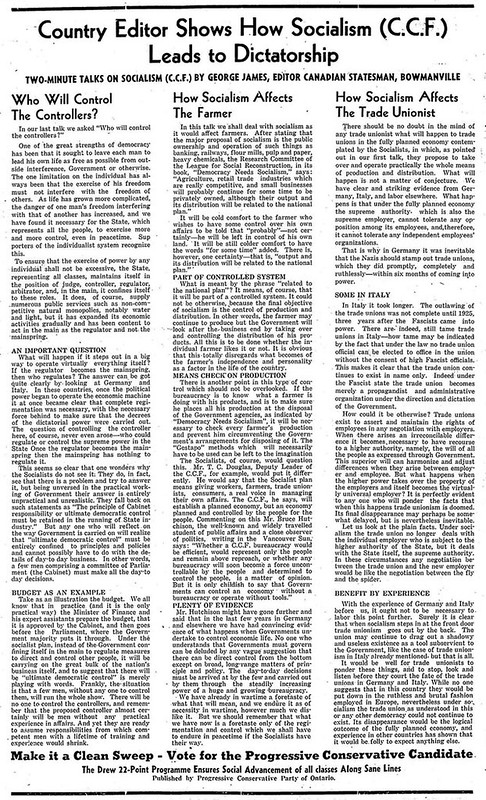 |
| Stouffville Tribune, July 29, 1943. Click on image for larger version. |
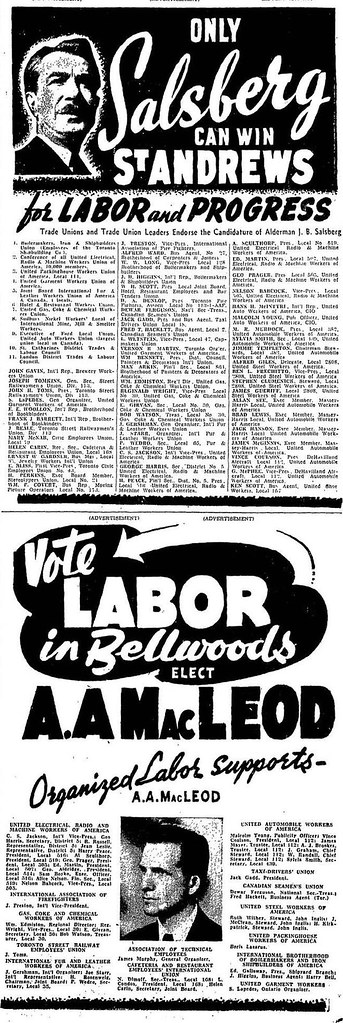 |
| Toronto Star, August 3, 1943. Click on image for larger version. |
Salsberg's victory was celebrated with a parade which began at College and Brunswick, grew to around 1,000 people, and wound its way to Spadina and Dundas. “It was late at night,” Salsberg later recalled. “it was warm, people were sitting outside. They not only applauded…when they saw me leading the parade, they rushed and we hugged and kissed—strangers. It was a communal affair.”
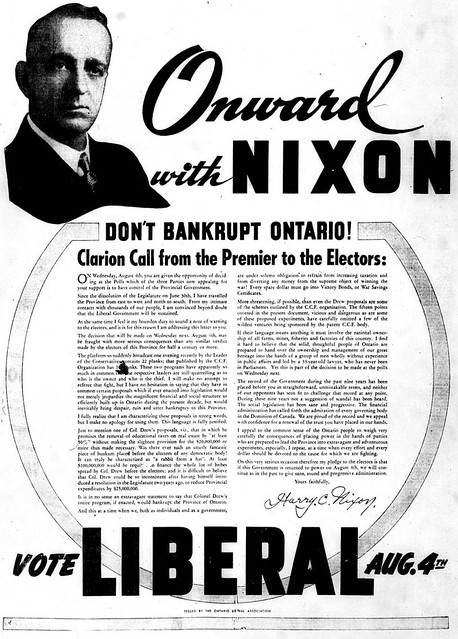 |
| Evening Telegram, July 31, 1943. Click on image for larger version. |
 |
| Evening Telegram, July 30, 1943. |
George McCullagh's political affiliation firmly switched to the Progressive Conservative camp by the time of the 1943 election, having lost his political influence over former Liberal premier Mitch Hepburn. Editorials in the Globe and Mail touted the campaign as one of the most important in Canadian history, and I imagine McCullagh's radio address was similar to his paper's excitement for Drew's platform.
Allan Lamport had been an MPP since 1937, but fell to third in 1943. The two candidates who beat him did pretty well for themselves. Winner
William Dennison (CCF) would, like Lampy, eventually serve as mayor of Toronto. As for the second place finisher in St. David...
 |
| Evening Telegram, August 3, 1943. Click on image for larger version. |
...
Roland Michener would win the seat in 1945, and later served as Governor-General of Canada from 1967 to 1974.
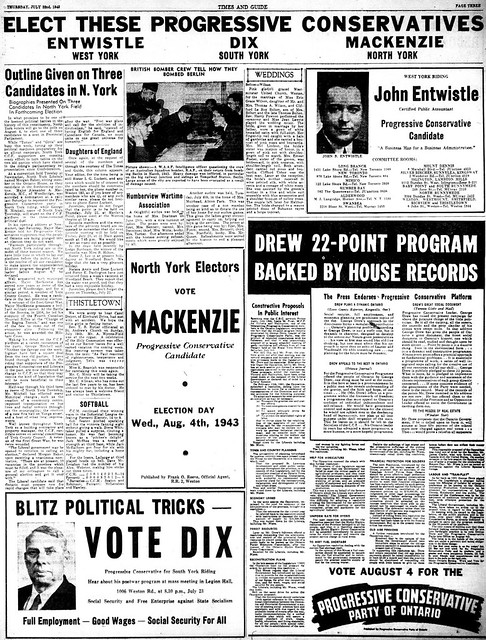 |
| Weston Times and Guide, July 22, 1943. Click on image for larger version. |
None of these PC candidates won, as the CCF swept all three of these ridings. So much for blitzing political tricks.
 |
| Toronto Star, August 5, 1943. |
Coverage of Rae Luckock's victory.
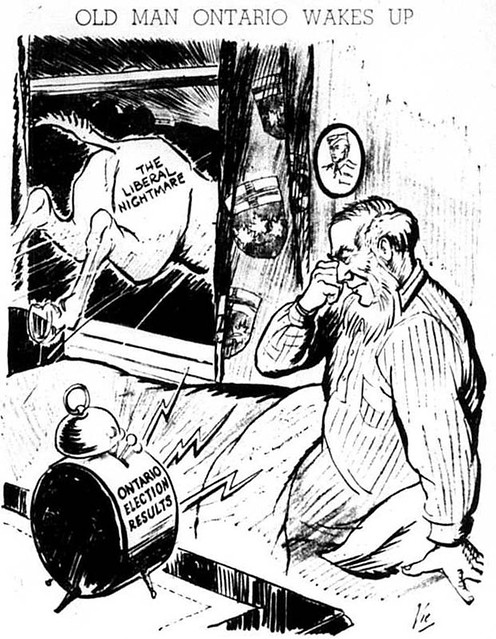 |
| Evening Telegram, August 5, 1943. |
Old Man Ontario went back to sleep, and didn't wake up again until 1985 (apart from that period between 1949 and 1961 where he served as premier under the alias Leslie Frost).

















No comments:
Post a Comment